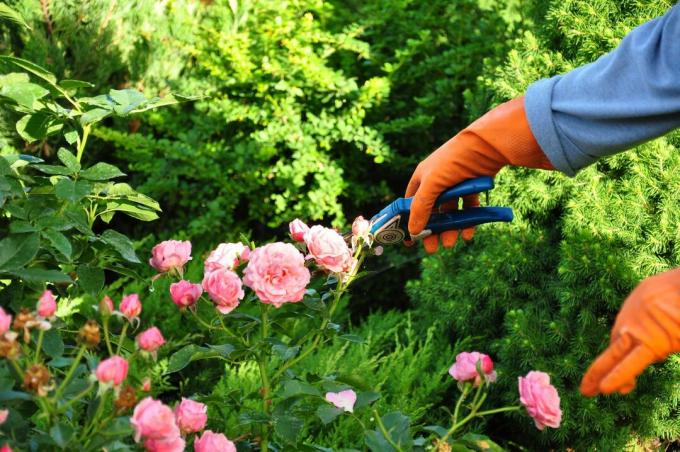It can make a lot of sense to prune a camellia to keep it in shape. We will show you everything to do with the ideal cut for your camellia.

contents
- Cutting camellia: when is the best time?
-
Cutting camellia: instructions from the expert
- Conservation pruning in camellias
- Parenting cut for camellias
- Camellias: how to cut exactly?
Cutting camellia: when is the best time?
The best time to prune camellias is from May to July. Here the plants are facing the phase of greatest growth and the flowering period is over. In general, flowers that have wilted can be cut out during flowering.
Cut camellia after flowering
Immediately after flowering, it makes sense to remove the withered, mostly still stuck flowers. Cutting the flower will immediately stimulate your camellia to start producing new buds again. The cut also encourages branching, so you can hope for a more luscious crown.

Cutting camellia: instructions from the expert
When cutting the camellias, a distinction must be made between several types of cut. Depending on the occasion, the procedure also changes slightly. However, the following applies to all cuts: less is more. We give a brief description of each cut and explain how to proceed.
Conservation pruning in camellias
The conservation pruning is to be used especially with sick camellia specimens in order to free them from their sick or already dead parts of the plant. However, one should proceed carefully and only remove infected parts of the plant. The maintenance pruning also includes thinning the crown of older plants. This means removing leafless and weaker shoots inside the crown. This supports the compression of the crown and channels the energy into young shoots.

Parenting cut for camellias
In contrast to the maintenance cut, the upbringing cut is more of a cosmetic measure. Here, too, there must first be lush shoots so that a moderate cut can be carried out at all. During the training pruning, only isolated shoot tips that protrude from the overall appearance of the plant are removed. Often the camellia is trimmed in a slight V-shape so that it tapers towards the base of the stem. An extravagant shape cut is hardly possible due to the slow growth and the airy crown trimmings.

Camellias: how to cut exactly?
The camellia naturally grows very clearly, which is why a cut is not particularly complicated. A cut can be made at every knot along the shoot because the camellia will sprout again there. However, care must be taken to ensure that your camellia does not lose too much biomass at once, as it is not so vigorous that it can quickly compensate for it. Whatever the occasion, always use sharp rose shears for your cut to avoid bruising.

More tips on the ideal Caring for your camellia You will find here.



